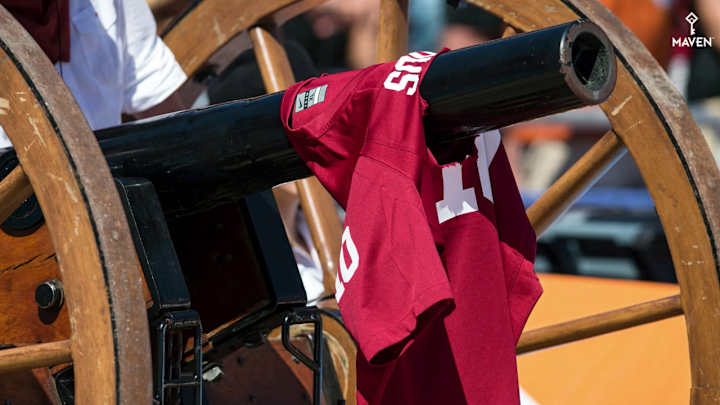Texas Longhorns: The History of Smokey the Cannon

Anyone who has ever attended a Texas football game (or been within earshot of the stadium when one is going on) has heard Smokey the Cannon.
The longtime Longhorn tradition is as synonymous with Texas football as Burnt Orange jerseys and Bevo, but how many people know the story behind it? Here's the history of Smokey the Cannon.
Smokey has its roots in a tradition even older than the cannon itself - trying to one-up rival Oklahoma.
The Longhorn students were looking for a way to counter the shotguns the Sonner RufNeks shoot off after every Oklahoma touchdown during the Red River Showdown games in the Cotton Bowl. What's bigger and louder than a shotgun? A cannon of course.
So since 1953 the Longhorns have ensured themselves that their rivals are bringing a gun to a cannon fight with Smokey the Cannon becoming an official staple in the Texas end zone.
The cannon was modified two years after to fire two 10-gauge shotgun shells after ever Texas score and the end of each quarter.
That version - known as Smokey II - served at Texas games until 1988 when its current incarnation - Smokey III - was purchased by the Texas Cowboys Alumni Association.
Smokey III was built by Lupton Machinery of Austin. It is a replica Civil War cannon made out of the trunk of an oak tree. It's original cost was $25,000.
The cannon is present for every home game and select games on the road (depending on regulations dictated by other cities and universities). It travels to Dallas every year for the Red River Showdown as well.
The group that operates the cannon is known as the Texas Cowboys, a spirit group made up of university students.
